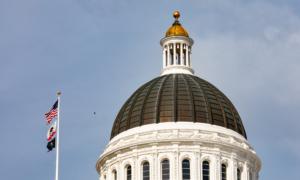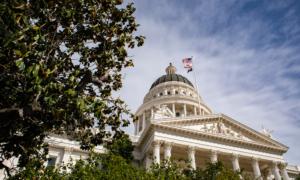Faced with a growing budget deficit, California lawmakers are negotiating a plan to close the gap with spending reductions, among other things.
On March 14, state Senators introduced a budget proposal dubbed “Shrink the Shortfall” offering $17.1 billion in potential solutions.
“When times are tight at home, people buckle down and do what needs to be done,” state Senate President Pro Tem Sen. Mike McGuire said in a statement announcing the plan. “That’s what the Golden State has to do right now too.”
The scale of the Golden State’s deficit is a subject of debate among leaders, with Gov. Gavin Newsom’s office suggesting it was $38 billion in January while the nonpartisan Legislative Analyst’s Office said the figure was closer to $58 billion earlier this year, which swelled to $73 billion last month after tax revenue failed to meet expectations.
The proposal uses the governor’s recommended approach of chipping away at the deficit with reduced spending, funding shifts, and program deferrals and delays.
About $3.4 billion in program reductions are on the table, with almost $5 billion in borrowing suggested by some senators. State analysts have repeatedly advised lawmakers during budget hearings this year to consider more cuts and fewer deferrals, as more deficits are projected in the coming fiscal years.
No new taxes are proposed by the plan. Instead so-called rainy day funds would be tapped—leaving about $13 billion if financial uncertainty persists.
“The quicker we move, the quicker we’ll be able to reduce the deficit, and we know we have to move decisively because the budget shortfall is real and serious,” Mr. McGuire said.
One of his Democratic colleagues agreed, saying that urgent action is needed.

“After years of strong progress to advance California values, we face a huge budget challenge,” state Sen. Scott Wiener said in the statement. “Time is truly of the essence.”
He said the plan would buy time for lawmakers to develop long-term solutions—to be discussed in the coming months—while immediately reducing the deficit.
“Let’s be clear: Shrinking the shortfall early in the process is step one,” Mr. Wiener said. “The Senate’s 2024–25 budget plan will be released later in the spring and will provide a comprehensive proposal for a balanced, responsible budget that protects core programs and services and positions the Governor and the Legislature to best protect California’s progress.”
The governor noted the significance of the budget challenges facing the state and urged a quick approval process.
“The deficit we’re facing this year will require big solutions, and I appreciate the Senate’s plan to close California’s budget deficit by $17 billion,” Mr. Newsom said in a March 14 statement reacting to the proposal. “I look forward to seeing this proposal move forward quickly.”
Some who were critical of the plan suggested that no money should benefit illegal immigrants, highlighting more than $4 billion currently earmarked for funding illegal immigrant health care.
“California citizens are struggling to afford health care and Democrats in Sacramento want to spend $4 billion we don’t have to give free healthcare to illegal immigrants,” Assemblyman Bill Essayli wrote in a post on X on March 13. “This, despite the fact that California is facing a $70 billion deficit.”
Republican lawmakers introduced their own plan last year calling for less spending and a readjustment of priorities to focus more on public safety.
“Capitol Democrats have run this state for over two decades, and their policies have created one problem after another,” state Senate Republicans wrote in a statement announcing their plan last year. “Expensive housing, sky-rocketing gas prices, rampant homelessness, an out-of-control fentanyl epidemic, catastrophic wildfires, inadequate water infrastructure, failing schools, and deteriorating public safety have forced too many families out of California.”
After tax revenues are collected, the governor will issue what’s known as a budget “May Revision.” Ultimately, the budget must be approved by the Legislature by June 15 and signed by the governor by July 1, the start of the 2024–25 fiscal year.







